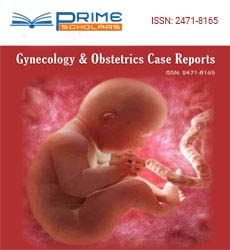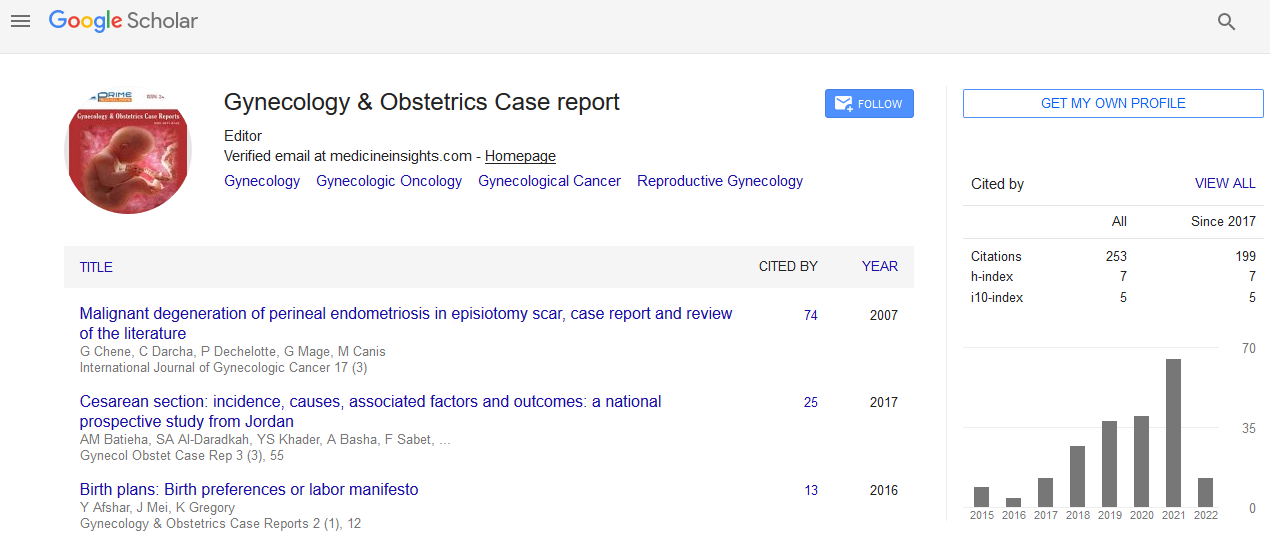Brief Report - (2025) Volume 11, Issue 1
Fetal Alcohol Spectrum Disorders: Prevention and Diagnosis
Leana Benjamin*
1Department of Gynecological Oncology, Pomeranian Medical University in Szczecin, Al. Powsta?ców Wielkopolskich 78, 70-2341 Szczecin, Poland
*Correspondence:
Leana Benjamin, Department of Gynecological Oncology, Pomeranian Medical University in Szczecin, Al. Powsta?ców Wielkopolskich 78, 70-2341 Szczecin,
Poland,
Email:
Received: 27-Dec-2024, Manuscript No. ipgocr-25-22701;
Editor assigned: 30-Dec-2024, Pre QC No. ipgocr-25-22701(PQ);
Reviewed: 10-Jan-2025, QC No. ipgocr-25-22701(Q);
Revised: 17-Jan-2025, Manuscript No. ipgocr-25-22701(R);
Published:
24-Jan-2025
INTRODUCTION
Fetal Alcohol Spectrum Disorders (FASDs) represent a range of physical, behavioral and cognitive disabilities that result from prenatal alcohol exposure. These disorders are entirely preventable, yet they continue to be a major public health issue worldwide, with lasting effects on children and their families. The damage caused by alcohol during pregnancy can affect the development of the brain, leading to lifelong challenges. Understanding the prevention and diagnosis of FASDs is critical in mitigating their impact and supporting affected individuals [1].
Alcohol is a teratogen, meaning it can cause malformations in a developing fetus. When a pregnant woman consumes alcohol, it passes through the placenta and directly affects the developing fetus. The degree of harm caused by alcohol exposure depends on various factors, including the timing of exposure, the amount of alcohol consumed and the individualâ??s susceptibility. The most severe effects typically occur when alcohol is consumed during critical periods of fetal brain development, which occur in the first trimester but can also affect the later stages of pregnancy. Research has shown that there is no safe level of alcohol consumption during pregnancy, making complete abstinence the best approach for preventing FASDs [2].
Prevention of FASDs begins with education and awareness about the risks associated with alcohol consumption during pregnancy. Public health campaigns and programs aimed at pregnant women have been central to the prevention efforts. These campaigns emphasize the importance of abstaining from alcohol before conception and throughout pregnancy. In addition to education, healthcare providers play a key role in preventing FASDs by counseling women about the risks of alcohol use during pregnancy. Routine screenings for alcohol use during prenatal visits allow healthcare professionals to identify women who may be at risk and provide resources and support for cessation.
DESCRIPTION
Despite prevention efforts, some women may continue to consume alcohol during pregnancy, either due to lack of awareness or because they are struggling with alcohol dependence. In these cases, early diagnosis and intervention are crucial for minimizing the long-term effects of FASDs. Diagnosis can be challenging, as there is no single test for FASDs. Instead, healthcare providers rely on a combination of physical, behavioral and developmental assessments to identify the condition. One of the key indicators of FASDs is the presence of facial abnormalities, such as a smooth philtrum (the groove between the nose and upper lip), a thin upper lip and small eye openings. These features are considered characteristic of Fetal Alcohol Syndrome (FAS), the most severe form of FASD. However, not all children with FASDs display these facial features, which can make diagnosis more difficult [3]. In addition to facial abnormalities, other diagnostic criteria include growth deficiencies and evidence of Central Nervous System (CNS) dysfunction. Children with FASDs often experience developmental delays, learning disabilities and behavioral problems, such as attention deficits, impulsivity and difficulties with social interactions. Neuroimaging studies may reveal structural abnormalities in the brain, such as reduced brain volume or damage to specific areas involved in memory and learning. Cognitive and neuropsychological testing can further assess the child’s intellectual functioning and behavioral patterns. The diagnosis of FASDs typically involves a multidisciplinary team, including pediatricians, neurologists, psychologists and other healthcare professionals, who work together to assess the child’s medical history, physical examination findings and developmental milestones. It is also important to consider maternal history, as prenatal alcohol exposure is a key factor in the development of these disorders. Diagnosing FASDs early can help ensure that affected children receive appropriate interventions and support, which can improve their long-term outcomes [4]. Once diagnosed, children with FASDs benefit from a range of supportive services aimed at addressing their unique challenges. Early intervention programs that focus on developmental, educational and behavioral support can significantly enhance a child’s ability to learn and develop. Specialized educational programs are often necessary to address cognitive and learning disabilities, while behavioral therapy can help children with emotional and behavioral challenges. Additionally, families of children with FASDs require support and resources to cope with the demands of caregiving. Support groups, counseling and community resources can provide families with guidance and assistance in managing the complexities of raising a child with FASDs. The long-term outlook for individuals with FASDs varies depending on the severity of the disorder and the availability of supportive services. Some children may experience lifelong challenges, while others can make significant progress with early intervention and ongoing support. While FASDs are lifelong conditions, with the right resources and treatment, individuals affected by these disorders can lead fulfilling lives and contribute to society [5].
CONCLUSION
Fetal Alcohol Spectrum Disorders are preventable conditions that can have a profound impact on individuals and families. Prevention requires widespread education and support for women to avoid alcohol use during pregnancy. Early diagnosis and intervention are crucial for reducing the effects of FASDs and improving the quality of life for affected children. With the right support, individuals with FASDs can thrive, but continued efforts are necessary to reduce the prevalence of these disorders and support those who are affected.
Conflict of Interest
None.
Acknowledgment
None.
REFERENCES
- Mackay HL, Muller PA (2019) Biological relevance of cell-in-cell in cancers. Biochem Soc Trans 47(2):725-732.
Google Scholar Cross Ref Indexed at
- Randall LM, Monk BJ, Darcy KM, Tian C, Burger RA, et al. (2009) Markers of angiogenesis in high-risk, early-stage cervical cancer: A Gynecologic Oncology Group study. Gynecol Oncol 112(3):583-589.
Google Scholar Cross Ref Indexed at
- Woodward PJ, Sohaey R, Kennedy A, Koeller KK (2005) From the archives of the AFIP: A comprehensive review of fetal tumors with pathologic correlation. Radiographics 25(1):215-242.
Google Scholar Cross Ref Indexed at
- Cassart M, Bosson N, Garel C, Eurin D, Avni F (2008) Fetal intracranial tumors: A review of 27 cases. Eur radiol 18(10):2060-2066.
Google Scholar Cross Ref Indexed at
- Feygin T, Khalek N, Moldenhauer JS (2020) Fetal brain, head and neck tumors: Prenatal imaging and management. Prenat Diagn 40(10):1203-1219.
Google Scholar Cross Ref Indexed at
Citation: Citation: Benjamin L. (2025) Fetal Alcohol Spectrum Disorders: Prevention and Diagnosis. Gynecol Obstet Case Rep.
Vol.11 No.1:09.
Copyright: Copyright: © Benjamin L. This is an open-access article distributed under the terms of the Creative Commons Attribution License, which permits unrestricted use, distribution and reproduction in any medium, provided the original author and source are credited.

